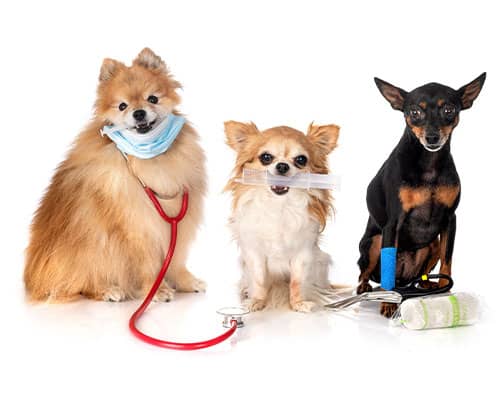Veterinary Diagnostics
Veterinary Diagnostics
Catachem continues to work closely with its customers to design specialty chemistry tests and tailor these to the specific needs and demands of the veterinary laboratory.
For example, veterinary blood samples are frequently milky and turbid due to high levels of lipids. Catachem has developed a unique clearing agent, CataKlear (CLR-525), for even the most lipemic samples, allowing accurate analysis of the sample’s components.
Animal blood can also become hydrolyzed during the trauma involved in obtaining a sample. Catachem reagents are optimized to handle the “less-than-perfect” samples that veterinary laboratories regularly encounter.

Specialty Veterinary Products
Beta-Hydroxybutyrate (C444-series)
Catachem has a simple and accurate assay for beta-hydroxybutyrate (C444-0A) that can be applied to most clinical analyzers. Unlike some competitive products that use a strong formazan dye that stains cuvettes and instrument reagent lines, the Catachem reagent uses alternative chemistry that eliminates these problems.
Fructosamine (C414-series)
Bromide (C422/C424-series)
Catachem’s bromide reagent can accurately test from the lowest level of detection of 5 mg/dL to 400 mg/dL. Toxicity in most dogs starts at around 120 mg/dL, with the animal becoming lethargic. As levels increase, animals can become comatose.
Plasma Free Hemoglobin (C462-0A)
This test can be run on most clinical chemistry analyzers, unlike those in the past. The test is sensitive and accurate enough to measure hemoglobin at levels approaching 2 mg/dL (1.2 µmol/L) and demonstrates linearity on most analyzers to 100 mg/dL (60 µmol/L).
Ethylene Glycol – Quantitative Test (C504-0A)
Catachem has developed an accurate quantitative test (C504-0A) that determines ethylene glycol levels. Values obtained on Catachem’s quantitative test reagent compare closely to values obtained on GC/MS methods (Am.J.Clin.Pathol. 2011, 136:165-6). Catachem’s product has been designed to effectively eliminate interferences from propylene glycol, a secondary component in some antifreeze products that is also used as an additive in some human foodstuffs.
NOTE: The antidote 4-methylpyrazole (fomepizole), shows no interference to a level of 120mg/L. A typical target range for treatment is 8 – 25mg/L.
(Annals of Clinical Biochemistry, Robson et al, 09, 2016)
Ethylene Glycol – Qualitative Test (C504-0B)
NOTE: No interference was found from 4-methylpyrazole pyrazole (fomepizole), the common antidote, which was tested to a level of 3,000 mg/dL (30 g/L). Click here for a demonstration of the ethylene glycol qualitative test.
Ethylene Glycol – FasTox Test Kit (C504-0C)
Mirroring Catachem’s quantitative test formulation, it is not subject to common interferences like propylene glycol. The format of the kit involving the use of both low and high controls during each test run eliminates any need for additional calibration.
Glutamate Dehydrogenase (GLDH) Test Reagent (C550-01)
GldH or GDH exhibits activity in the liver, kidney, pancreas and brain. The enzyme’s activity in blood serum is used to differentiate between different types of liver diseases. In large animals, and as noted more recently in laboratory mice, GlDH levels can increase while transaminase levels (ALT and AST) remain relatively constant. The GlDH assay is therefore very useful during drug development where general liver inflammation may often show no elevation in ALT and AST, hepatocyte necrosis will show elevated serum GldH levels.
GldH measurement has also been used in detecting Clostridium difficile infection (J. Clin. Microbial. 2010, 48(8) 3050). Catachem’s product is a UV method utilizing a single stable liquid reagent. Applications are available for most chemistry analyzers. This reagent has an 24-month shelf life.
How Can We Help You?
If you are looking to place an order, request technical help or ask questions about us, get in touch today!
